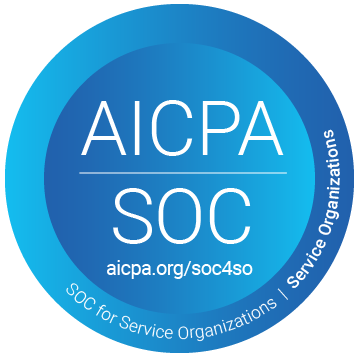From Vendors to Policies: How Compliance Automation Strengthens the Insurance Claims Management Process

Bridging the Operational Gaps in Claims Management
The insurance sector is in the midst of a digital transformation. From AI-driven underwriting to real-time fraud detection, innovation is reshaping every facet of the industry. However, one critical area remains riddled with inefficiencies and manual touchpoints: vendor and subcontractor compliance.
Despite the rise of policy administration software and claims automation tools, many insurers continue to manage third-party vendor relationships using spreadsheets, fragmented systems, and manual approvals. This creates blind spots in risk management, delays in the claims management process, and vulnerability to regulatory penalties.
By integrating vendor compliance automation into the heart of insurance operations, firms can modernize claims workflows, reduce turnaround times, and deliver a superior policyholder experience.
Why Vendor Compliance Matters in Claims Management
Every insurance claim involves multiple stakeholders—from in-house adjusters and investigators to third-party vendors like restoration contractors, appraisers, and legal support. These vendors play a direct role in how quickly and accurately a claim is resolved.
Unfortunately, when vendor documentation is outdated or non-compliant, claims stall. Regulators may also scrutinize improperly vetted subcontractors, exposing the insurer to legal risks.
Common Vendor-Related Challenges in Claims:
❌ Outdated credentials or licenses delay claim progression
❌ Non-compliant vendors lead to audit failures and potential fines
❌ Inefficient onboarding extends the time needed to engage vendors
❌ Lack of performance data makes it hard to assess vendor reliability
These issues aren’t just operational—they’re strategic. In a hyper-competitive market where customer satisfaction is paramount, every delayed claim impacts brand trust and retention.
The Role of Compliance Automation in Modern Insurance
Compliance automation refers to the use of technology to manage, track, and enforce adherence to regulatory and contractual standards—especially for external entities like vendors and subcontractors.
Benefits of Automating Vendor and Subcontractor Compliance:
✅ Real-Time Risk Visibility: Get instant access to vendor status across licenses, insurance coverage, and certifications.
✅ Centralized Data Storage: Replace siloed records with a single source of truth accessible to both claims and compliance teams.
✅ Proactive Alerting: Automatically notify stakeholders of expiring documents or compliance violations before they become bottlenecks.
✅ Performance Insights: Track vendor performance over time to inform strategic decisions and contract renewals.
By integrating these capabilities with your insurance claims management system, you create a seamless environment where compliant vendors are onboarded faster, used more efficiently, and tracked with accountability.
The Role of Compliance Automation in Modern Insurance
Compliance automation refers to the use of technology to manage, track, and enforce adherence to regulatory and contractual standards—especially for external entities like vendors and subcontractors.
Benefits of Automating Vendor and Subcontractor Compliance:
✅ Real-Time Risk Visibility: Get instant access to vendor status across licenses, insurance coverage, and certifications.
✅ Centralized Data Storage: Replace siloed records with a single source of truth accessible to both claims and compliance teams.
✅ Proactive Alerting: Automatically notify stakeholders of expiring documents or compliance violations before they become bottlenecks.
✅ Performance Insights: Track vendor performance over time to inform strategic decisions and contract renewals.
By integrating these capabilities with your insurance claims management system, you create a seamless environment where compliant vendors are onboarded faster, used more efficiently, and tracked with accountability.
Industry Use Case: A Claims Efficiency Turnaround
Consider a regional P&C insurance carrier managing over 500 subcontractors across storm restoration, appraisal services, and legal support. Pre-automation, vendor vetting required 3–5 days per contractor and was prone to missing documents and renewal deadlines.
After implementing SmartCompliance:
The onboarding process
was reduced from
4 days to under 8 hours
Faster claims
closed
Less Vendor-related
compliance violations
Integration with their claims platform enabled live updates during audits
This transformation didn’t just improve back-office efficiency—it empowered the carrier to respond more quickly during CAT events, preserving policyholder trust and minimizing claim cycle disruptions.
How Compliance Automation Supports Policy Administration Systems
The benefits don’t stop with claims. Strong vendor compliance workflows also enhance policy automation software by ensuring that the services tied to policy endorsements—like home inspections, appraisals, or medical reviews—are executed by credentialed and verified partners.
Consider This Scenario:
A policyholder requests an endorsement for earthquake coverage. This requires a certified structural inspector to evaluate the property. Without real-time compliance tracking, dispatching an unverified inspector could invalidate the endorsement or lead to regulatory scrutiny.
With compliance automation, the policy administration system integrates with SmartCompliance to:
- Validate credentials in real-time
- Assign only verified vendors
- Log documentation directly to the policy file
This reduces administrative overhead, improves customer transparency, and ensures seamless service delivery.
2025 Outlook: The Compliance Imperative for Insurance Leaders
As insurers prepare for more stringent regulations, evolving digital expectations, and growing third-party ecosystems, the need for scalable, automated compliance solutions becomes urgent.
Claims automation tools and policy automation software can no longer operate in silos. They must be part of a connected infrastructure where compliance is embedded into every process—from vendor onboarding to claims payout and policy renewal.
Insurance leaders who adopt this integrated approach will not only improve efficiency—they’ll set a new standard for trust, transparency, and responsiveness in the industry.
Practical Steps to Get Started
If you’re considering strengthening your compliance strategy, here’s how to begin:
1. Assess Your Current Compliance Process
- Are vendor documents stored centrally?
- Do you receive proactive alerts for expirations?
- How long does onboarding take?
2. Identify Integration Opportunities
- Can your compliance platform connect with your claims management system?
- Is your policy administration software equipped to sync with vendor data?
3. Choose an Automation Partner
- Look for platforms that offer real-time tracking, audit logs, onboarding workflows, and performance analytics.
Transform Your Claims Process with SmartCompliance
Ready to eliminate delays and reduce risk in your insurance operations?
Book a Personalized Demo and discover how to unify your vendor compliance and claims management into one seamless solution.


